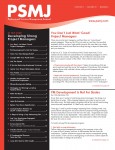 There has been a lot of talk about wellness being a key component of health plans of the future. With the crazy costs of health plans (driven by the ever-increasing cost of medical care), that future needs to be now.
There has been a lot of talk about wellness being a key component of health plans of the future. With the crazy costs of health plans (driven by the ever-increasing cost of medical care), that future needs to be now.
Employers struggle every year with premium increases on their employee health plan and have to decide either to cut the benefits, absorb the cost, pass along some or all of the cost to the employees, or some combination of these actions. Additional costs are inevitably shifted to employees, whether in the form of higher premium contributions or higher out-of-pocket costs when claims arise (for example, high deductibles.)
When an employee or his family member is sick, it’s stressful. On top of that, employees deal with the financial stress from out-of-pocket cash for copayments and high deductibles. By providing ways to live a healthier lifestyle, employers reduce the likelihood and severity of illness and added stress in their staff and staff’s families. Because more than half (and some studies say as much as 75%) of claims dollars are from lifestyle-related illnesses (meaning, as a result of lifestyle choices such as smoking and poor eating habits,) wellness programs can, and will, impact claims.
Why aren’t all companies embracing wellness programs? Companies are generally reluctant to make new investments in the current economy. On top of that, the ROI of wellness programs is hard to measure, and the results are long-term, not immediate. If you form a wellness program, the health of your employees will improve within a year. The full impact on your cost, however, will not be felt for much longer. Firms that want to make a commitment to wellness need to be able to look away from ROI, being happy that wellness initiatives will result in employees who are healthier, happier, and more productive.
In some states, if your firm is under a certain size, the health of your workforce has no impact on the cost of your insurance program. But there is still a significant cost to the firm when employees are sick. With less illness and stress in the workplace, there will be lower costs to the employer in the form of claims dollars, absenteeism, and presenteeism (defined as coming to work when ill, resulting in lower effectiveness, spreading of germs, morale problems, and time spent calling doctors.)
While the right wellness initiatives are a good investment, if you’re not willing to spend the money, it’s still important that you find ways to bring in free or inexpensive programs. Perhaps you can find a local nutritionist, fitness expert, or wellness coach to provide a free educational session for your people (in the hope of attracting clients from among your employee base.) There are also organizations that will work with you for a small per-employee fee, such as LiveHealthyAmerica.org. Our firm participated in their 100-day wellness challenge.
The best way to make changes is to break down your goals into small steps. Rather than being paralyzed by the challenge of doing something big with wellness, do something small. Take a first step—for yourself, for your family, for your employees, and for your firm.
